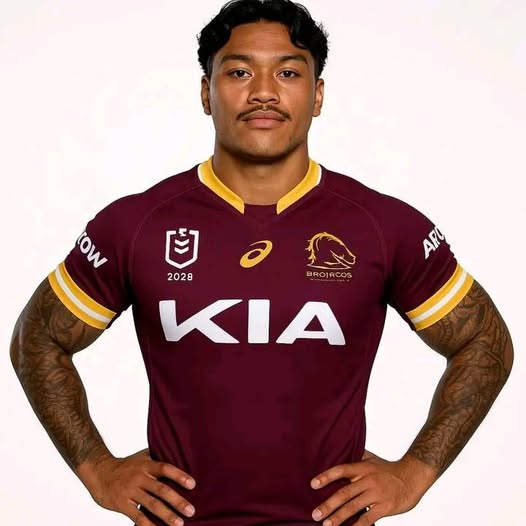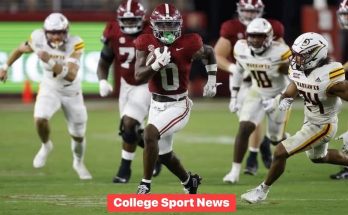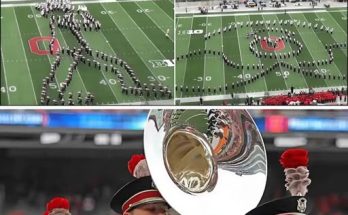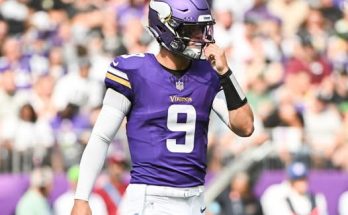In a stunning turn of events that has sent shockwaves rippling through the National Rugby League (NRL) landscape, star winger Brian To’o has signed a jaw-dropping \$4.5 million deal with the Brisbane Broncos. The move marks one of the most unexpected and seismic transfers in recent NRL history, igniting fierce debate, speculation, and excitement ahead of the 2025 season. Long considered a cornerstone of the Penrith Panthers’ recent dominance, To’o’s switch north not only alters the competitive balance of the league but also triggers a wider conversation about loyalty, market forces, and the evolution of the modern rugby league athlete.
To’o, known affectionately as “Bizza” among fans and teammates, has carved a reputation as one of the most consistent and electrifying wingers in the game. His ability to break tackles, score dazzling tries, and lift the morale of his team has earned him accolades at both the club and international levels. Having been integral to Penrith’s back-to-back premierships and their dynasty run in the early 2020s, many assumed he was a Panther for life. The mere idea of him suiting up in maroon and gold rather than the black and teal of Penrith seemed inconceivable—until now.
The Broncos’ bold acquisition has not only shattered expectations but also redefined what NRL teams are willing to do in pursuit of premiership glory. The \$4.5 million contract, reportedly spread over four years, makes To’o one of the highest-paid wingers in the history of the sport. For a position that has traditionally been overlooked when it comes to big money, this deal sends a clear message: the modern winger, especially one with To’o’s talents, is worth every cent.
From a business standpoint, the move makes sense. The Broncos are a powerhouse club with a rich history and an enormous fan base. But they’ve also been starved of premiership success since their last title in 2006. With a young, talented roster that includes the likes of Reece Walsh, Payne Haas, and Ezra Mam, adding a player of To’o’s caliber elevates Brisbane into serious premiership contention. The team’s management, particularly coach Kevin Walters and CEO Dave Donaghy, have shown they are willing to swing big in the player market. In landing To’o, they have secured a proven performer with a winning pedigree, strong leadership qualities, and marketability that extends beyond the field.
To’o’s transition to Brisbane is not without its emotional undertones. Penrith fans, many of whom have followed his journey from junior footy through to State of Origin and international stardom, have expressed a mixture of heartbreak and admiration. Social media has been flooded with reactions, ranging from sorrowful farewells to fierce criticism of both the player and the club. Some fans feel betrayed, questioning why the Panthers allowed such a key figure to walk. Others point to the realities of the modern game—where salary caps, player movement, and personal aspirations create complex dynamics that make long-term loyalty increasingly rare.
It’s important to remember that rugby league, for all its tribalism and passion, is also a business. Players have finite careers, and the opportunity to secure life-changing financial security cannot be easily dismissed. At 26, To’o is entering his prime. This contract not only rewards him for past excellence but also challenges him to elevate his game in a new environment, under new systems, and in front of a fresh legion of fans.
The move also highlights the shifting sands within the NRL player market. In the past, marquee signings were often limited to spine players—fullbacks, halves, hookers. Wingers and centers were rarely viewed as franchise-altering pieces. But To’o has bucked that trend. His performances in the Origin arena, his relentless work rate, and his ability to carry the ball like a forward have forced teams to rethink traditional valuations. His signing may well open the door for other high-profile outside backs to command similar financial recognition in the years to come.
For the Broncos, the challenge now lies in integrating To’o seamlessly into a side that already possesses significant attacking weapons. There will be tactical questions—who shifts to accommodate him, how does the backline structure adjust, and how does his presence influence the kicking strategies and set-piece plays? But if there’s one thing To’o has proven, it’s his adaptability. Whether it’s grinding out tough metres in yardage sets or finishing off slick backline movements, he’s the kind of player who improves those around him.
Moreover, To’o brings leadership and professionalism to the locker room. He’s a vocal, energetic presence who leads by example. His humility, rooted in his Samoan heritage and western Sydney upbringing, has made him a fan favorite across the league. In a Broncos side filled with emerging stars, his experience and championship mindset will be invaluable—especially when the stakes are high.
Still, this blockbuster signing raises critical questions about Penrith’s future. How do they replace a player of To’o’s impact? Can the club maintain its elite standards while navigating the inevitable salary cap pressures that come with sustained success? While Penrith’s junior system is among the best in the league and has churned out talent for over a decade, losing To’o adds to a growing list of high-profile exits in recent years. Viliame Kikau, Api Koroisau, and Stephen Crichton have already moved on, and To’o’s departure further tests the club’s depth and resilience.
Panthers coach Ivan Cleary now faces the task of reshaping his backline. Will an internal candidate like Sunia Turuva step up, or will the club dip into the market to find a replacement? Either way, To’o’s departure leaves a hole—not just in terms of production, but in spirit and culture. He was more than just a winger; he was a symbol of Penrith’s rise, an embodiment of their fearless style, and a key thread in the fabric of the team’s identity.
From the NRL’s broader perspective, this deal may serve as a watershed moment in how teams approach recruitment and player retention. As the salary cap continues to rise and broadcast revenues grow, we may see more high-profile moves that challenge traditional club loyalties and reshape fan expectations. Clubs will need to be more strategic than ever—balancing cap management, succession planning, and the human element of what it means to build a team around shared values and chemistry.
For fans, To’o’s move is a reminder of the emotional complexity of modern sports. It’s easy to cheer a local hero when he’s scoring tries and dancing in the corner. It’s harder to watch him leave for a rival, even if the decision is understandable. But this is the reality of elite competition—where players chase dreams, teams chase titles, and the lines between passion and pragmatism often blur.
As the 2025 season approaches, anticipation will build. The Broncos will enter the season with heightened expectations, buoyed by the addition of To’o and a sense that their premiership window is wide open. Every touch he gets will be scrutinized. Every try he scores will be replayed. And every clash against the Panthers will be must-watch television—narratives of rivalry, redemption, and reunion all rolled into one.
The story of Brian To’o’s move to Brisbane is still being written. Whether it ends in silverware or heartbreak, it will undoubtedly be one of the defining chapters of this NRL era. His decision to leave the only club he has ever known at the professional level is brave, ambitious, and deeply symbolic of the shifting dynamics within the league. It is also a personal leap—a challenge to himself to grow, to lead, and to chase greatness on a new stage.
In the end, sports are about moments. And Brian To’o has delivered plenty. Now, in the jersey of the Brisbane Broncos, he has the chance to create even more—moments that inspire, divide, and ultimately, define what it means to be a rugby league superstar in the modern age. Whether he’s embraced by Brisbane or remains a polarizing figure in Penrith folklore, one thing is clear: the NRL will be all the more thrilling for having Brian To’o at the heart of its next chapter.
As fans, we’ll debate the dollars. We’ll analyze the tactics. We’ll feel the emotional weight of seeing a hero in a different jersey. But above all, we’ll watch. And that, perhaps, is the ultimate power of a blockbuster move like this—it commands attention, sparks imagination, and reminds us why we care so deeply about the game in the first place. Brian To’o to the Broncos is more than just a transfer; it’s a catalyst for change, a sign of ambition, and a bold new beginning in a sport that thrives on both tradition and transformation.



